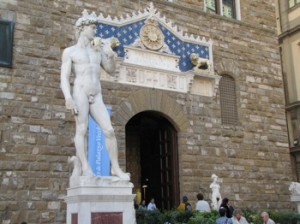
One of the nicest things about the world’s greatest art galleries is that they tend to be in the world’s greatest cities – which is incredibly convenient. Once you’ve walked through kilometres of galleries and squinted at countless treasures until your arty-farty quotient is exhausted, you can soak up the vibe of the city around you. Theatres, restaurants, pubs, clubs, parks and shops galore will inject new life into tired eyes and feet, so you’re ready to visit those obscure rooms on the fifth floor that you just never reached the day before. Here’s a guide for seeking out the gems.
London
London is always well worth visiting for more than art alone. Even the food is pretty good these days. The British Museum reflects the old colonial days when the Brits went out looting and colonizing, gathering art and artifacts spanning Chinese, Asian, Aztec, Egyptian (including mummies and The Rosetta Stone) and the Elgin Marbles. And cor blimey, mate, they even let you in the museum for free.
The stone sculptures known as the Elgin Marbles were one of the most important features of the Acropolis in Athens. So why are they in London? Well, Thomas Bruce, the Seventh Lord Elgin, collected them when he was the British ambassador in Istanbul. Collected is a euphemism really, since the Greeks claim he ‘looted’ them between 1801-05. The booty, including a frieze spanning 247ft, accounted for roughly half the Parthenon’s relics.
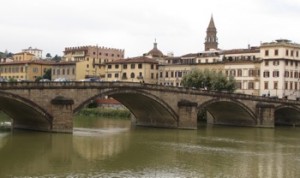
Florence
One of the world’s most beautiful cities, with a compact centre crammed with exquisite architecture. Favourite galleries are the Uffizi and the Academy, which houses an outstanding collection of works by Michelangelo.
The Uffizi gets crowded because it’s not enormous, so you may have to jostle to admire highlights including Botticelli’s Birth Of Venus. Much of the art was collected by the Medici family, who also commissioned the building in 1560.
Science is an art too, so check out the Galileo Gallery next door. These ingenious science, medical and astronomy instruments come from an age of splendour, so they’re gorgeous as well as groundbreaking. Sadly they won’t let you tinker around to see how anything works. One masterpiece is an enormous 17th century cosmographical model of the world by Antonio Santucci. Beautiful, but baffling to we lesser mortals.
Rijksmuseum, Amsterdam
Amsterdam is bristling with oddball sights, making this museum rather formal in comparison. But it’s the place to admire Rembrandt’s Night Watch. The Rijksmuseum is being renovated, and currently displays the crème de la crème of its masterpieces in the newly furnished Philips Wing. More than 30 restorers are busy preserving, restoring and investigating art objects for the opening of the new Rijksmuseum in 2013.
Painstaking research into the Night Watch has proved that Rembrandt reneged on the terms of his commission. The painting was commissioned for the civic guard building known as Kloveniersdoelen (today’s Doelen Hotel) with six of the city’s artists – Rembrandt, Pickenoy, Bakker, Van der Helst, Van Sandrart and Flinck – asked to produce paintings to be displayed as a series of unbroken friezes, each matching the other. But The Night Watch clashed in composition and colour to the others. So Rembrandt had reneged on the deal. Artists – such prima donnas!
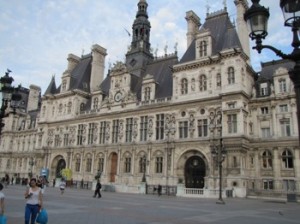
Paris
Paris is another living art gallery, with plenty of sights that arguably outflank the tiny and rather dour Mona Lisa. Guided tours in English let you whizz around its highlights in 90 minutes, except on Tuesdays, public holidays and the first Sunday of every month. You’ll see the elegant Venus de Milo statue from the Greek Hellenistic period as well as Leonardo da Vinci’s enigmatic Mona.
Not to be outshone by its 35,000 works of art, The Louvre itself is an architectural masterpiece, starting life as a royal fortress when the aristocracy really knew how to infuriate the peasants with their opulent displays of wealth. The Louvre is equally well known for its love-it-or-hate it glass and steel pyramid entrance.
The Hermitage, St Petersberg, Russia
Another glorious building where the rich and royal flaunted it over the poor and downtrodden. In fact forget the art, just stand and admire the Tsar’s Winter Palace that forms the centre of the gallery. The curators will tell you the collection is so large that perhaps only 10% is on display. You’ll drool over more than 100 Faberge artefacts, a huge collection of ancient gold, and important pieces from the classical cultures of Greece, Rome and Eqypt, as well as works by Picasso, Matisse and Van Gogh. An excellent website at www.hermitagemuseum.org links to a virtual tour of all its rooms.
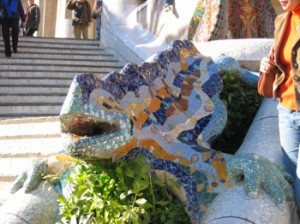
Museum Picasso, Barcelona
Museum Picasso is in Barcelona’s beautiful medieval Barri Gotic quarter, a lovely erratic collection of rambling alleyways. The museum houses an astonishing 3,800 works by the prolific Picasso, many of them extensively renovated. The collection dates right back to his early days in the 1890s when his faces still had recognisable features in all the right places. Look out for two of his first major early works, The First Communion and Science Charity. Also check out the bizarrely buckled buildings by Gaudi, Park Guell for great views of the city and giant marble chameleons, and Salgrada Familia cathedral, still only half finished after 100 years. Oh well, maybe manana…
The Guggenheim and MOMO, New York
Personally I find the Guggenheim building more engaging than its contents, but I never claimed to be arty. Frank Lloyd Wright’s spiral building contains works by Picasso and Cezanne. Work through the museum by taking the lift to the top floor and walking down the spiral interior, diverting into the various exhibitions and galleries on the way down.
The Moma Museum of Modern Art boasts, with typical New York confidence, of housing the world’s finest collection of modern and contemporary art. Its eclectic displays span architecture, design, drawings, sculpture, photography, books and electronic media as well as Picasso, The Dance by Henri Matisse, The Starry Night by Van Gogh’s and Andy Warhol’s Campbell Soup Cans. Talking of soup, when hunger strikes try New York’s brilliant baked cheesecake. Now that’s what I call art!
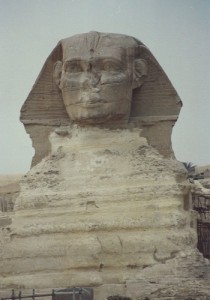
Egpytian Museum, Cairo
Tutankhamum’s gold funeral mask is the highlight of this collection, but there are definite downsides to visiting the Egyptian Musuem. Firstly, if defies my theory that great art is in great cities you’re dying to visit, because Cairo is an exception. Yes, its an amazing place, but most visitors hate it.
Noisy, dirty, smelly and ludicrously overcrowded, with hectic traffic assailing you outide the musuem. Inside it’s almost as chaotic, unless they’ve done a massive overhaul since my last visit. Priceless artefacts lie around unlabelled, and guards tend to rest their weary bodies by sitting on the ancient obelisks and other treasures. But that magnificent mask, another 1,700 pieces from King Tut’s short but golden days and some fascinating mummies are well worth seeing. With Egypt’s recent political turmoil, best check the travel advisories before you go.

